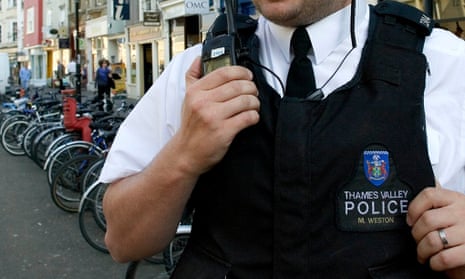More than 300 young people have been groomed and sexually exploited by gangs of men in Oxfordshire in the past 15 years, a damning report into the failures of police and social services to stop years of sexual torture, trafficking and rape will reveal, the Guardian has learned.
The victims, mostly girls, come predominantly from the city of Oxford, increasing concerns that the grooming and exploitation of vulnerable young people by groups of older men is not confined to the inner cities. One senior investigative source said: “If you think you haven’t got a problem in your city or town, you are just not looking for it.”
Police and social services in Oxfordshire will be heavily criticised for not doing enough to stop years of violent abuse and enslavement of six young girls, aged 11-15, by a gang of men. Such was the nature of the abuse, suffered for more than eight years by the girls, it was likened to torture. All of the victims had a background in care.
A serious case review by the Oxfordshire safeguarding children’s board, to be published on Tuesday, will condemn Thames Valley police for not believing the young girls, for treating them as if they had chosen to adopt the lifestyle, and for failing to act on repeated calls for help.
Oxfordshire social services – which had responsibility for the girls’ safety – will be equally damned for knowing they were being groomed and for failing to protect them despite compelling evidence they were in danger. One social worker told a trial that nine out of 10 of those responsible for the girls was aware of what was going on.
The serious case review has put a figure on the numbers exploited to give an idea of the scale of the problem. The report will say more than 300 young people have been subjected to grooming and abuse between 1999 and 2014 in Oxfordshire alone.
The attempt to quantify the scale of abuse mirrors the work of the Jay report into child sexual exploitation in Rotherham, which said 1,400 young people had been subjected to grooming and abuse between 1999 and 2013.
An insider said the report was “brutal” in its condemnation of Thames Valley police and Oxfordshire social services.
Weeks before the publication of the serious case review, the chief executive of Oxfordshire county council, Joanna Simons, announced she would be stepping down in the summer, a move questioned by the Oxford East MP Andrew Smith, who said he was “concerned at the decision and how it had been taken”.
The council said she would not be replaced and the authority was reorganising its management structure. In a joint message with the council in January, Simons said that in order to protect frontline services, the authority would be making changes to its top team which would involve the departure of the chief executive.
The case echoes the child exploitation scandals in Rotherham, Rochdale and Derby involving gangs of men of Asian background targeting white girls in care. In Oxford, however, the grooming, sexual torture and trafficking took place on the streets of the Cowley area of the city, in churchyards, parks, a guesthouse and empty flats procured for the purpose of drugging the girls and handing them around to be gang raped and brutalised.
A 12-year-old victim was branded by the men and, when she fell pregnant, subjected to a backstreet abortion in a house in Reading. Over six years, she was repeatedly raped by groups of men in what she described as “torture sex”.
Key findings in the serious case review will expose how police officers and social workers did not listen to the girls when they spoke of the abuse they were suffering, did not believe them and dismissed them.
The girls and some of their abusers crossed the police and social services radar multiple times. In 2006 alone, the police received four complaints from the young girls about the men, with their accounts corroborated in some cases. One victim reported the abuse twice to police in 2006. She told officers: “They are doing it to other girls, little girls with their school uniforms on.”
There were thousands of contacts between both agencies and the girls and they were reported missing at least 450 times. One victim, known as Girl C, has spoken of how her foster mother reported her missing 80 times.
The number of young people identified by the report – more than 300 – as victims of child sexual exploitation in the last 15 years is considered a robust figure because the girls have all been spoken to by police or social services.
But the numbers are likely to be an underestimate. Figures from Thames Valley police reveal that 220 of the 2,000 child abuse cases reported across the force in 13 months from July 2013 to August 2014involved child sexual exploitation.
Nearly 700 children and young people suspected of being at risk of exploitation have been referred to new specialist police and social services units in Thames Valley between November 2012 and November 2014; 250 in Berkshire, 237 in Buckinghamshire and 206 in Oxfordshire.
It was not until 2011 when DCI Simon Morton trawled through missing persons reports, health records and social services data that Thames Valley police began to link the girls’ repeated patterns of going missing, returning and going missing again with the activities of the men – some of whom were known to police for drug crimes.
After a groundbreaking two-year investigation, Operation Bullfinch, seven men – including two sets of brothers – were convicted at the Old Bailey in May 2013 of 43 offences, which included trafficking, forcing girls into prostitution, procuring an illegal abortion, rape and physical violence.
Brothers Akhtar and Anjum Dogar, Bassam and Mohammed Karrar, Kamar Jamil, Zeeshan Ahmed and Assad Hussain, who were all from Oxford, were given sentences ranging from a minimum of seven to 20 years in prison.








